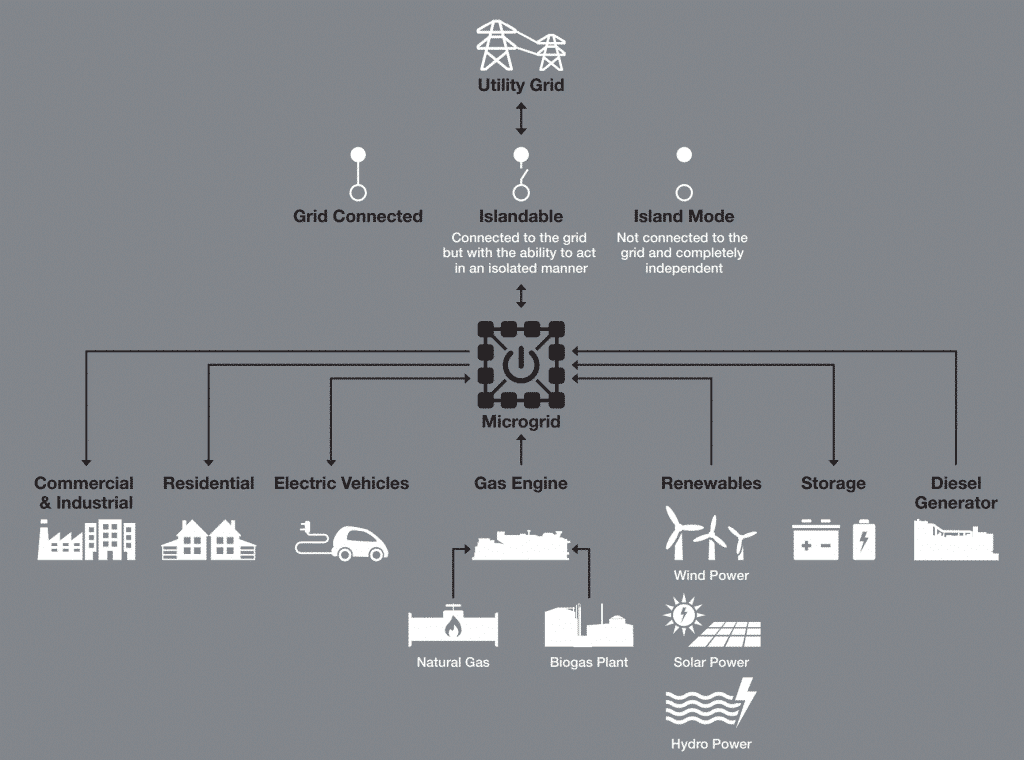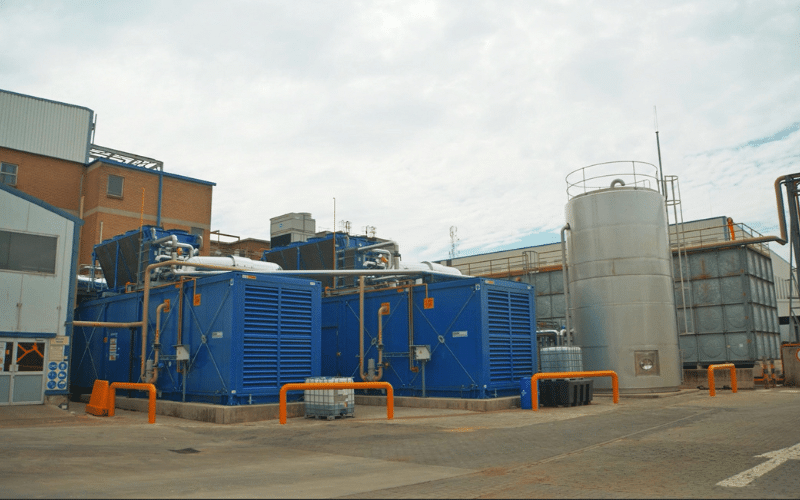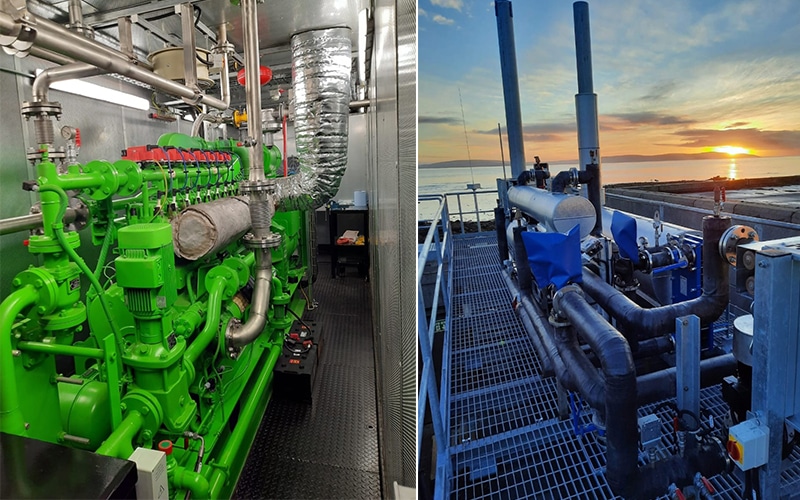Island Mode Operation Captive Power Plant
Gas engines are well suited to acting in island mode operation as a captive power plant helping to support a facility’s resilience, either on their own, or as part of a wider microgrid. Island mode operation relates to those power plants that operate in isolation from the national or local electricity distribution network.
Island mode operation can take two key forms:
- Stand-alone generators not connected to the electricity grid
- Generators connected to the electricity grid in parallel mode, which can generate independently in the event of a grid power supply failure

A microgrid schematic showing island mode and islandable mode functions
A large number of CHP plants have been installed without an electrical connection to an external electricity system. This is often as a result of the site’s remote location, the unreliability of the local electricity network, or regular interruptions in power supply.
These sites operate in ‘island mode’. They have the benefit of avoiding the costs of installing external site connections, but they must manage their provision and consumption of power with no top-up or backup supplies. The loading rates applied to the generator from the site machinery must be considered when engineering the gas fuelled power plant. These sites usually require a high level of installed plant capacity to ensure power availability at all times. However, many of the sites that operate CHP plants in parallel mode also have the facility to operate in island mode. This provides them with the particularly useful capability of providing power to the site when the local area electricity system has suffered a supply failure.
Some sites consider that their CHP plant avoids the need to install back-up power provisions for emergency use. If a period of island mode operation is planned, it is relatively simple to ensure that the site demand is set at a level that does not exceed the net power output of the CHP plant. Once this is established, the connection to the local area system is disconnected by opening the circuit breaker. The site can then operate in island mode, with the CHP output modulating to meet site demand.
The change from parallel to island mode may occur instantaneously when the local area supply system suffers an outage. In this situation, it should be possible for the CHP plant to continue supplying the site load without interruption, on condition that the site load can be immediately limited to the output level of the CHP plant. This is usually achieved using load monitoring and control equipment, which can automatically disconnect selected parts of the site load. If this load limitation cannot be achieved, the CHP plant will usually shut down when there is a failure in the local area system with which it is operating in parallel. The site will then lose all power supplies. However, as long as the site system has facilities to disconnect selected supply circuits within the site, the CHP plant can quickly be restarted to provide site power up to its maximum output level. This usually requires prompt action by the site electrical engineering staff in operating circuit breakers according to a prepared procedure.
It is also necessary for the CHP plant to be equipped with a back-up power source to enable it to be restarted in the absence of any external power source. This backup will usually comprise a small stand-by diesel generator. If the site has other stand-by generation facilities, power can be made available from these sources to restart the CHP plant.
Island mode operation requirements
In all cases the installation must have the following incorporated:
- A means of dissipating the thermal heat produced by the CHP, usually a dedicated dry air cooler, electrically fed and controlled from the CHP.
- A secure gas supply, at the required pressure, at all times, ensuring that any automatic fire solenoid valves where fitted are not operated on loss of mains, otherwise you need to ensure the CHP gas supply is before such valves.
- A means of load control for both shedding and applying load in a controlled manner so as not to exceed the engine manufacturers step load limitations. This can range from manual load application, to a totally automatic load shedding /application system.
- An earth system dedicated to the CHP generator to ensure that the earth fault paths are maintained even at times of island operation.
Consideration will also need to be given to the voltage and frequency fluctuation limitations of the connected site loads, as this could further restrict the CHP step loading/shedding.
Please contact your local Clarke Energy office if you wish to learn more.
External Links
Nigerian regulations for captive power plants.




